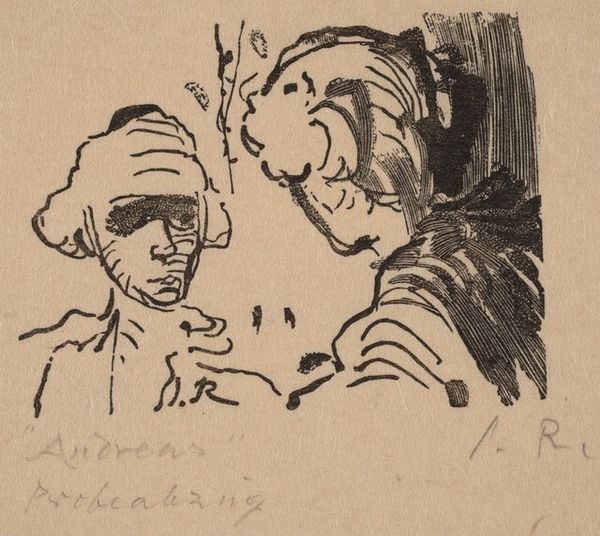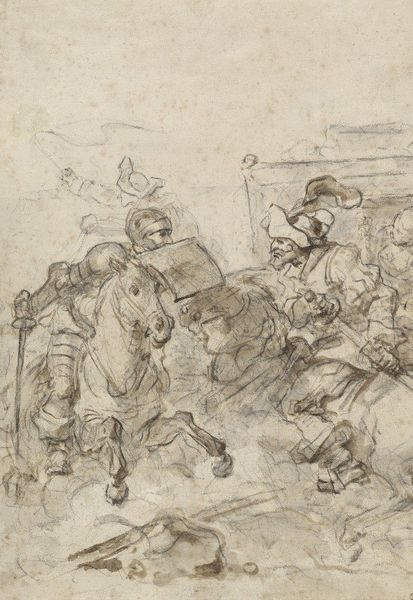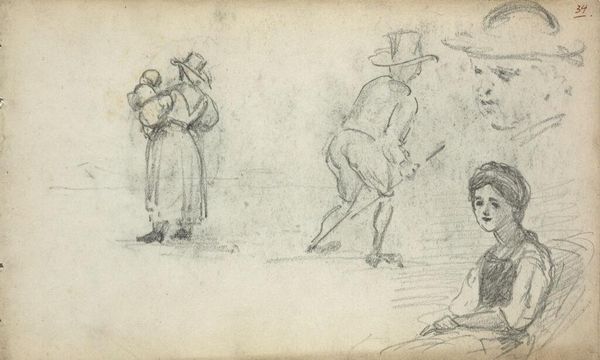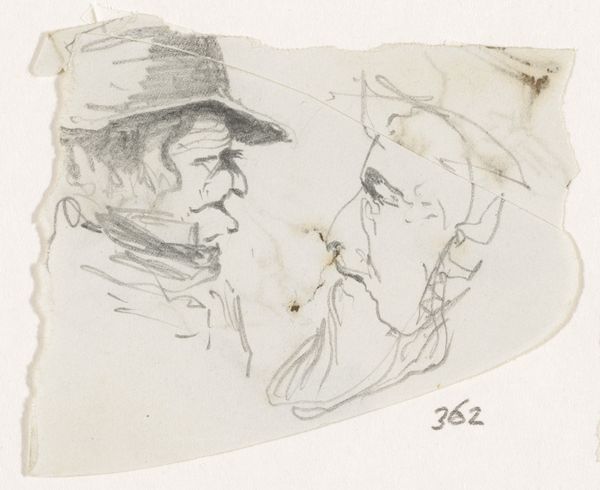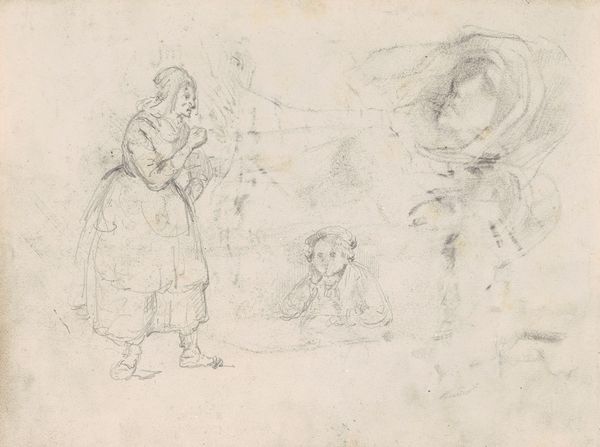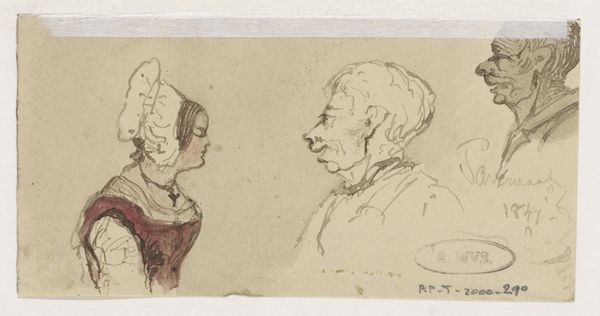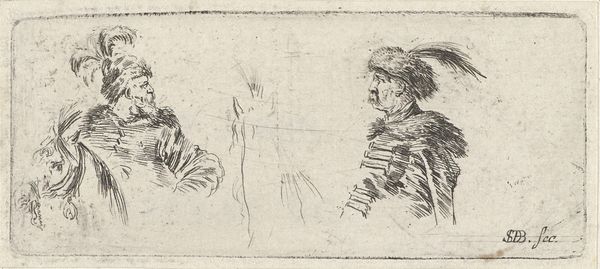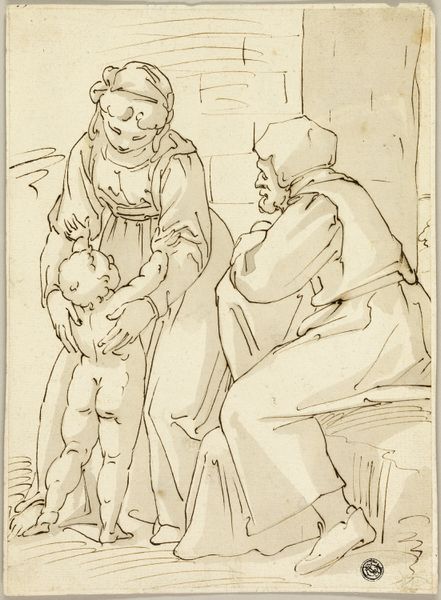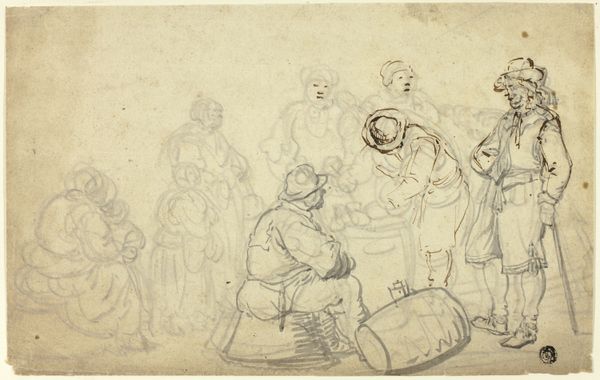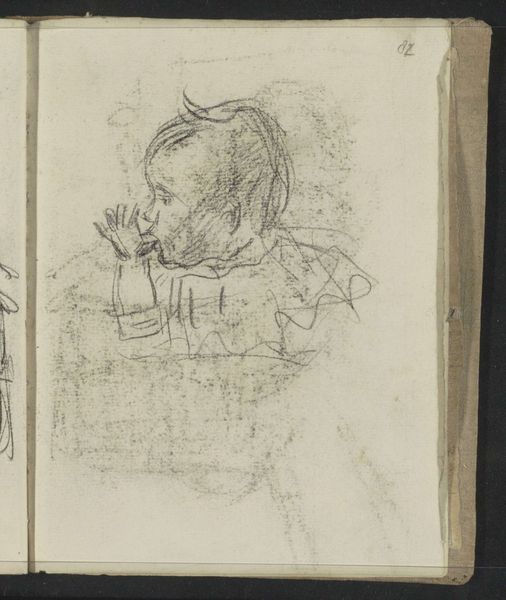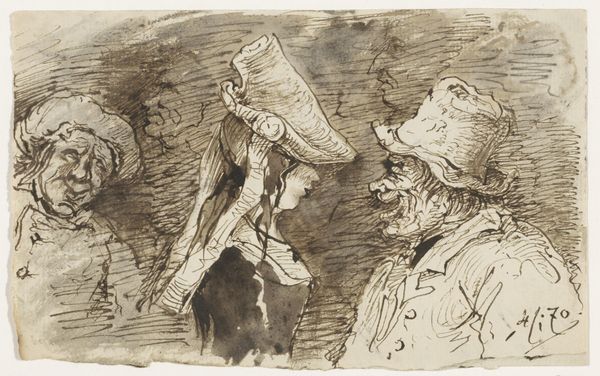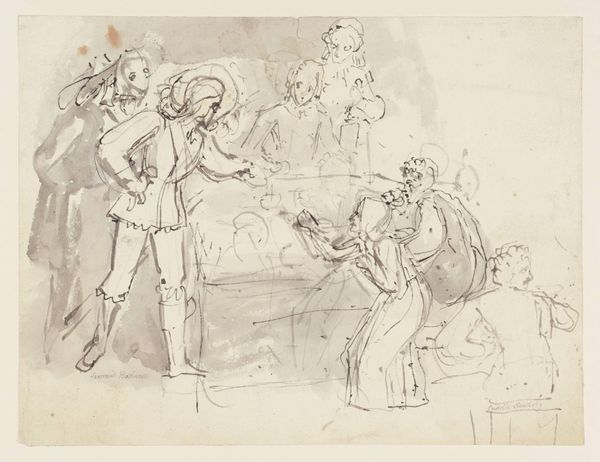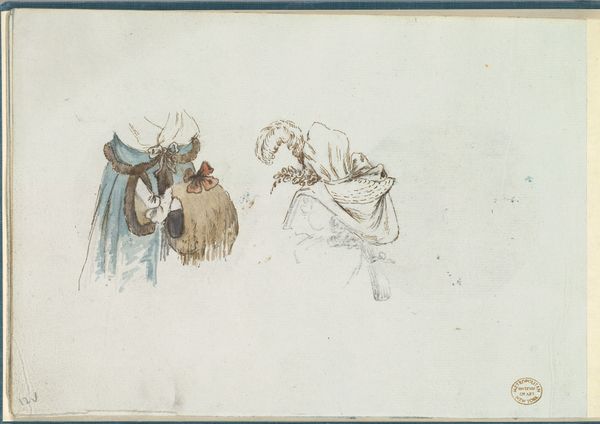
Twee mannen met hoge hoeden en een vrouw met een kap 1864 - 1880
0:00
0:00
drawing, pencil
#
portrait
#
drawing
#
pencil sketch
#
pencil
#
portrait drawing
#
genre-painting
#
watercolor
#
realism
Copyright: Rijks Museum: Open Domain
Curator: This drawing is called "Twee mannen met hoge hoeden en een vrouw met een kap"— "Two Men with Top Hats and a Woman with a Bonnet." It's a pencil sketch from Johannes Tavenraat, dating somewhere between 1864 and 1880, now residing here at the Rijksmuseum. What’s your first impression? Editor: Immediate—whimsical. The hats are the first thing I notice. They’re comically tall, almost Seussian. And look at how Tavenraat captures the light; the stark contrast makes me think about the labour required to produce that tone. What kind of pencils did they have back then? Curator: Imagine them in real life—the rustle of starched bonnets, the shadows the hats cast. I can almost hear the gossip. It feels very "snapshot in time," yet deeply personal, doesn't it? Like we’ve stumbled into a private moment, not necessarily monumental, but definitely human. Editor: I'm curious about that bonnet, actually. The fabric would have been processed, woven—it's a whole industry hidden in that simple head covering. And those hats! Stiffened felt? The social power those hats symbolized, constructed, shaped and imposed on these figures... fascinating. Curator: Power is interesting to mention, given the very mundane subject, almost poking fun at high society through… very commonplace attire. Like an inside joke played across the years. Editor: Precisely! Everyday clothes rendered significant. The artistry here is not just in the pencil strokes, but in transforming the material realities of dress into cultural commentary. Was Tavenraat wealthy, and using a cheap medium or a pencil gifted or sourced with great effort, with access to fancy paper... or scraps? All those possibilities influence how we interpret his social critique. Curator: True—he might be holding up a mirror to their world or perhaps to the viewer’s perception, the lines are blurred, leaving us to interpret—ultimately making it deeply individual. It feels strangely current, if that makes any sense. Editor: Absolutely, and the legacy of that work. These drawings served as practice pieces perhaps? I imagine their creation, not divorced from the need to earn a living, Tavenraat transforming base materials into reflections of a culture grappling with class, status, and perhaps, humour. It makes you wonder. Curator: I feel like, through a drawing that appears simple at first glance, Tavenraat compels us to rethink how the everyday becomes extraordinary. Editor: For me, it brings the usually invisible world of the 19th-century manufacture into focus and demands attention be paid. The social contexts these forms imply, still in our culture.
Comments
No comments
Be the first to comment and join the conversation on the ultimate creative platform.
